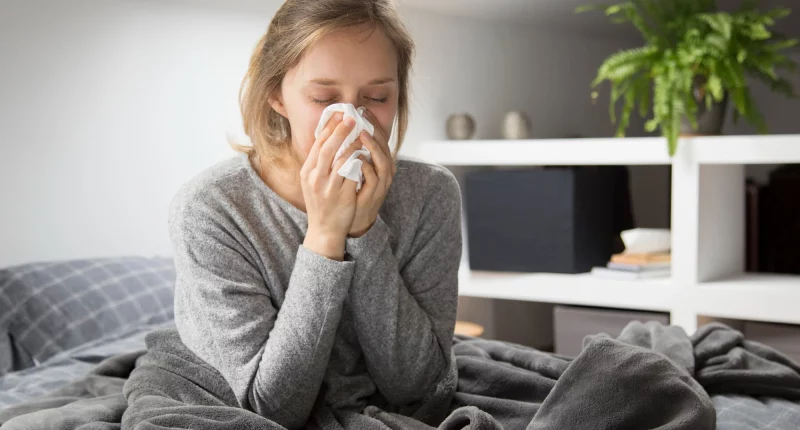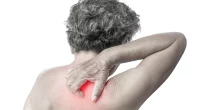Hip Bursitis is also known as Trochanteric bursitis. It happens when small, fluid-contained sacs in the hip, known as bursae, get irritated. This irritation can be caused by injury, overutilization, hip replacement surgery, bad posture, and other factors.
Bursae are tiny sacs filled with fluid that are located near joints throughout the body. They help joints move smoothly by allowing tendons and muscles to slide around bones and other structures without friction. The human body has more than 150 of these bursae.
When these sacs get inflamed, the condition is called bursitis. It is also known as greater trochanteric pain syndrome, specifically affects a part of the hip bone termed as the trochanter. And it is the bony prominence at the top of the thigh bone (femur).
Symptoms
Hip Bursitis is a frequent cause of external hip pain in active middle-aged females. This condition can cause important hip pain, particularly when pressure is applied to the hip. Symptoms of hip Bursitis include pain on the external side of the thigh or hip, which often makes it bad with physical activity, walking upstairs, sleeping on the affected area, or stressing on the hip.
It is typically more intense at night, particularly when lying down or on one side for a while. If the tendons over the hip bone are also inflamed, the symptoms can be even more severe.
Gluteus Medius Tear
The signs of hip Bursitis may be similar to those of a gluteus medius tear. The gluteus medius is a muscle that connects to the same area as the bursa. A tear in this muscle can lead to weakness when attempting to move the leg or hip away from the body. If signs stay and a gluteus medius tear is suspected, it is important to see a healthcare provider, as this injury might need a medical procedure.
Causes
Hip Bursitis can develop due to various factors, including trauma, overuse, poor posture, bone spurs, chronic diseases, previous surgeries, and being overweight.
Trauma, such as hard bumps or falls can lead to hip bursitis. Overuse from repetitive activities like biking or running can inflame the hip. Bad posture, including sitting in a curved position, can strain the hips, and conditions like scoliosis can contribute to this issue.
Bone spurs, which are bony growths on the trochanter, can rub opposite the bursa, causing inflammation. Chronic diseases like thyroid disease, gout, rheumatoid arthritis, and psoriasis also increase the chance of getting this condition.
Previous hip surgeries, including hip replacements, can lead to hip bursitis. Between 3% and 17% of individuals who have had a hip replacement develop this condition. Medical procedures that outcome in slight leg length differences may also contribute to the problem.
Lastly, being overweight or obese can place additional strain on the hip area, increasing the likelihood of developing hip bursitis.
Treatments
Several methods are used to treat hip bursitis, starting with rest to allow the swollen bursa sacs to heal. Sometimes, walking devices like crutches or canes may be needed. Non-prescribed anti-inflammatory medicines, like Naproxen or Ibuprofen, can help reduce pain and inflammation.
Applying an ice pack, cooling pad, or heating pad to the affected area can also handle pain and decrease inflammation. Physical therapy exercises are recommended to enhance the range of strength and motion of the muscles over the hip. In some cases, corticosteroid injections, as advised by a healthcare provider, can be used to further decrease inflammation and pain.
Losing weight is another important step if an individual is overweight, as being overweight can strain the hips and exacerbate pain.
If these treatments do not alleviate the pain, a healthcare provider may suggest surgery, though this is typically considered only after 12 months of unsuccessful medical and at-home treatments. In severe cases, the bursa can be eliminated through less invasive techniques, often based on an outpatient, so the patient is not required to stay in the hospital all night.
Diagnosis
To diagnose hip bursitis, a healthcare provider will start by reviewing the patient’s medical symptoms and history. A physical test of the hip will be performed, during which the healthcare provider will feel for sensitive areas where the bursa is possibly located.
The pain from hip bursitis typically gets bad on the portion, or side of the hip. The healthcare provider might also feel places of bulging tissue on the hip, which can mark the presence of hip bursitis.
In addition to the physical test, the healthcare provider may suggest imaging studies to look for abnormalities associated with the bursa.
The healthcare provider will consider symptoms that indicate hip bursitis and work to eliminate other same conditions. For instance, an individual who has trouble wearing socks and shoes or experiences pain from the initial step when walking might have osteoarthritis instead of hip bursitis.
Signs of hip bursitis can be similar to or confused with other conditions, such as osteoarthritis, fibromyalgia, and snapping hip syndrome.
Outlook
Hip bursitis can be a bothersome and painful condition, but there are treatments available that can help. Over-the-counter (OTC) treatments, like pain relievers and anti-inflammatory medications, often provide relief from symptoms. Resting, applying ice or heat, and doing specific exercises can also help manage the pain.
If these treatments don’t work and the pain continues, surgery may be considered as a last resort. Surgery is only recommended when all other methods have failed to provide relief. Overall, many people find that their symptoms improve with the right combination of treatments.
Summary
Hip bursitis causes hip pain, particularly on the outer side, and can result from trauma, overuse, poor posture, bone spurs, chronic diseases, prior surgeries, and being overweight. Symptoms include worsening pain with activity, night pain, and discomfort when pressing on the hip. Diagnosis involves a medical history review, physical exam, and possibly imaging tests to rule out other conditions.
Treatments range from rest, OTC pain relievers, physical therapy, and corticosteroid injections to weight loss and, in severe cases, surgery. The condition is typically manageable with these treatments, though surgery is a last resort. Proper treatment often leads to significant symptom relief and improved quality of life.
External links









